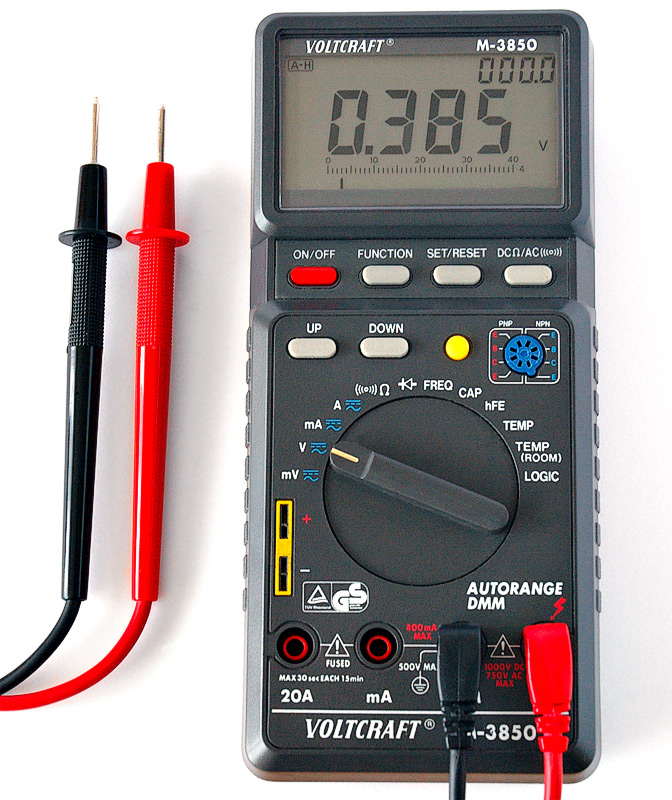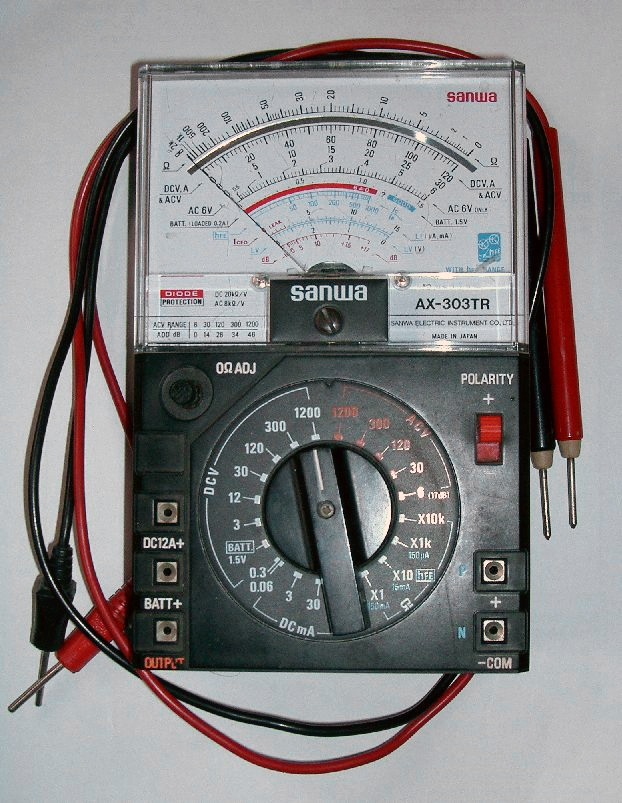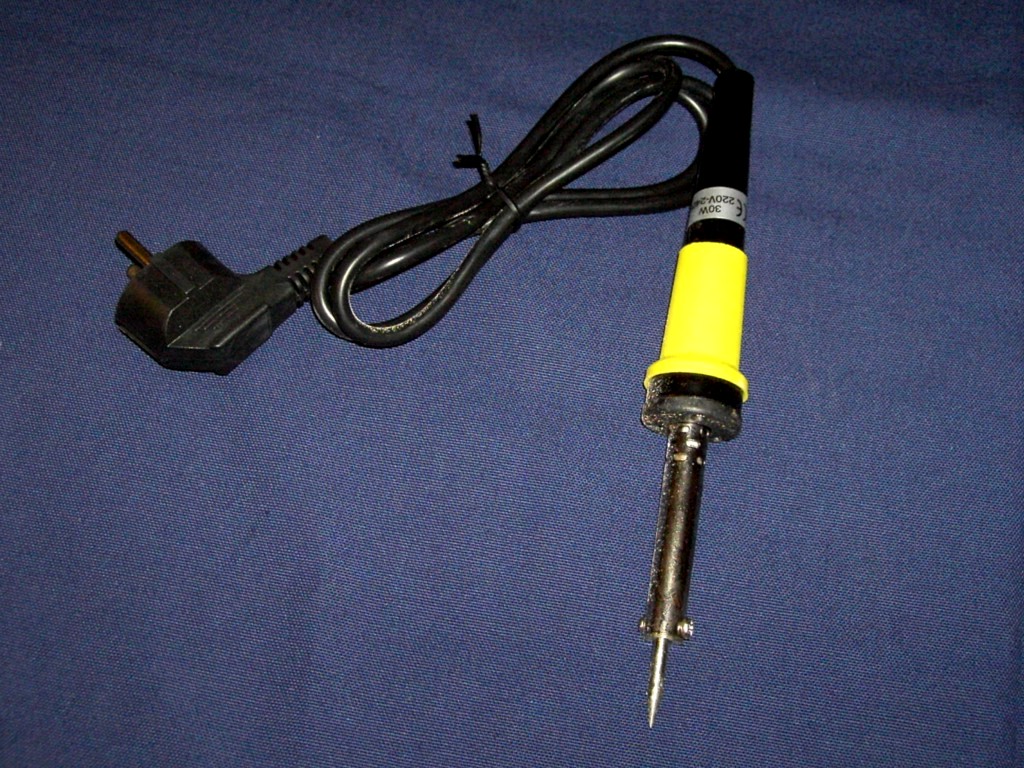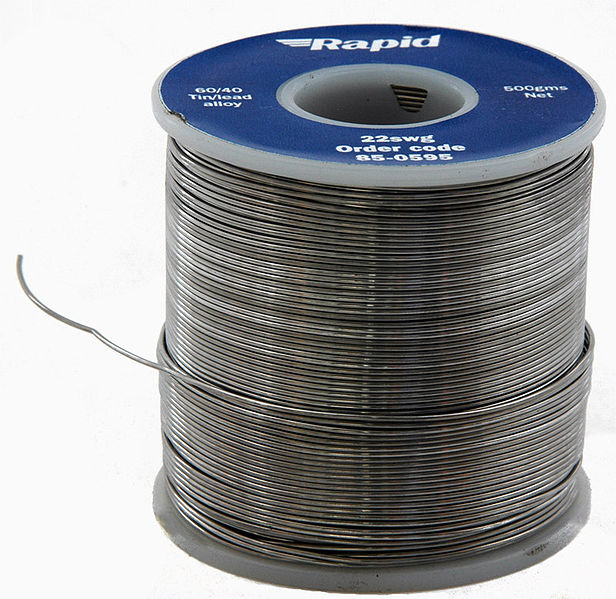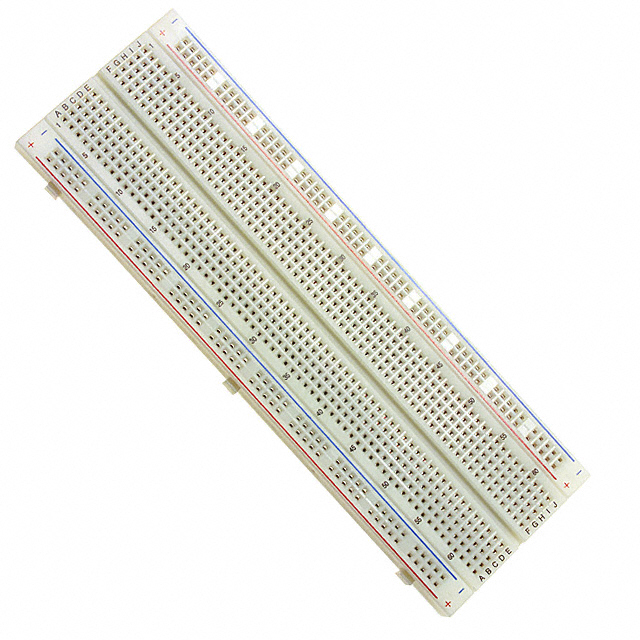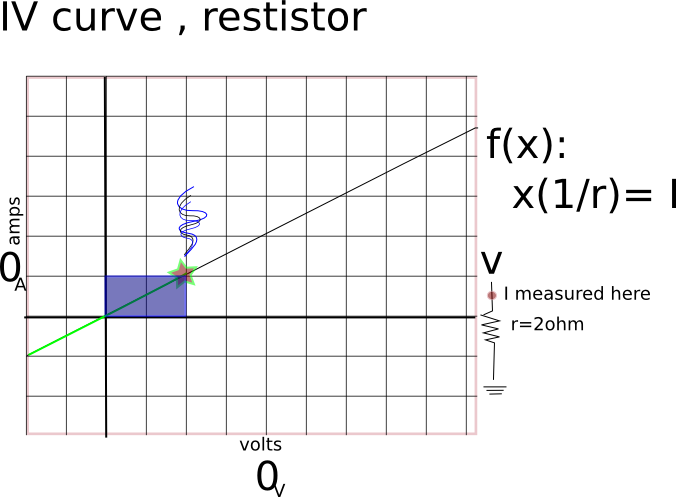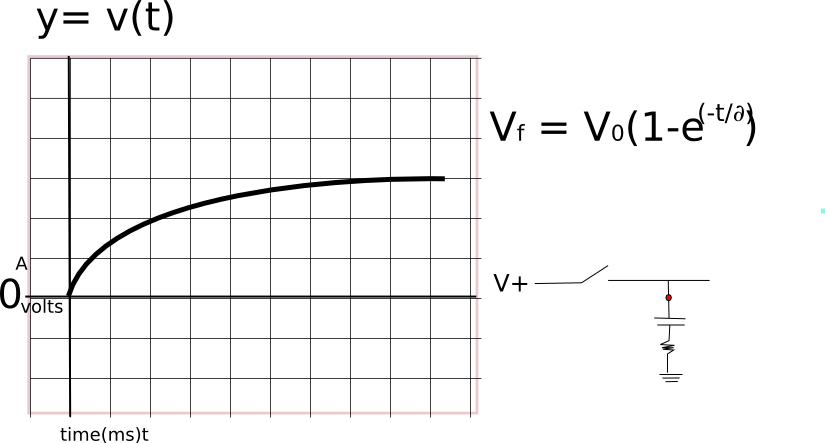ElectronicsClass: Difference between revisions
From HacDC Wiki
(pointing to existing wiki page for microcontroller course) |
|||
| (56 intermediate revisions by 12 users not shown) | |||
| Line 1: | Line 1: | ||
= Electronics Class = | = Electronics Class = | ||
This class is targeted at the beginner who wants to learn electronics. It would make a fine prerequisite to the [[Microcontroller Course]] or the [[HAMClass]] | This class is targeted at the beginner who wants to learn electronics. It would make a fine prerequisite to the [[Microcontroller Course]] or the [[HAMClass]] | ||
=== tease === | |||
These images form a slide show and a gestalt introduction to electronics. In which we map the techniques available to hackers and their surrounding requisite building blocks. | |||
*[[http://wiki.hacdc.org/images/8/82/Mindmap.jpg]]mindmap | |||
My hacking started with music and production. it wasn't exacly the tech; more for the ride. | |||
*[[http://wiki.hacdc.org/images/5/5c/Wmuc_main.jpg]] WMUC main studio | |||
Complicated behaviour arises from iteration of simple models. Learning how to operate something like this is simpler and more subtle than it looks. | |||
*[[http://wiki.hacdc.org/images/thumb/9/99/Wheatstone.jpg/800px-Wheatstone.jpg]] wheatstone broadcast console | |||
Easier to see is block diagram form; a gestural view of a complex system. WMUC recording suites and broadcast control rooms. Computing. | |||
*[[http://wiki.hacdc.org/images/b/b9/Mixerschem.png]] signal diagram | |||
Why study DC/baseband/RF electronics; anachronism? | |||
*[[http://wiki.hacdc.org/images/a/a3/Roofchill.png]] chill on the roof. | |||
Space shuttle shots; APRS , RACES, field day. Social technical effects require proficiency. | |||
*[[http://wiki.hacdc.org/images/e/ea/W3eaxtower.png]] W3EAX tower | |||
Small systems scale into big ones. 40,000 people at Operation ceasefire (united for peace& justice) '05 at the national mall. Standing between SS, Park police and thousands of protesters. | |||
*[[http://wiki.hacdc.org/images/d/d7/Ceasefirestage.jpeg]] ceasefire stage | |||
*[[http://wiki.hacdc.org/images/3/30/Ceasefirecrowd.jpeg]] ceasefire 40k | |||
No always smooth sailing. | |||
*[[http://images.spaceref.com/news/2003/09.06.03.noaa-n.med.jpg]] mars needs bolts | |||
Building whimsey. | |||
*[[http://wiki.hacdc.org/images/b/bf/Dancepanel.jpeg]] lightup dance floor | |||
Computer control over physical objects. microcontrollers + christmas tree lights. | |||
*[[http://wiki.hacdc.org/images/f/f3/Dancectll.jpeg]] dance floor controller | |||
Not always smooth. Electrical compatibility != political compatability | |||
*[[http://wiki.hacdc.org/images/2/2c/Hhr.png]] hhr - phear the transaxle | |||
More small systems iterated. | |||
*[[http://wiki.hacdc.org/images/c/cc/Igniterschem.jpeg]] fireworks diagram | |||
DIY Ignition source in Berlin. in a pinch you don't need a parts catalog. | |||
*[[http://wiki.hacdc.org/images/9/91/Igniterface.jpeg]] igniter controller | |||
Apologies to Dakami | |||
*[[http://wiki.hacdc.org/images/d/d1/Fireworkscrates.jpeg]] fireworks crates | |||
Simple systems, RC control, Robots and igniters. | |||
*[[http://2.bp.blogspot.com/_KqHQ-3WDqyk/SFqH25qqRwI/AAAAAAAAAS0/sJ2S8ppcBWQ/s1600-h/1055943372_295788412e.jpg]] wm greek fire | |||
Recently robotics have become accessible to experimenters. Bluto cuts, welds and hugs. | |||
*[[http://wiki.hacdc.org/images/4/47/Cadfab.jpg]] Welding robots! | |||
==Required Materials== | ==Required Materials== | ||
* Soldering Iron (25-30w) | (see also: our [[Suppliers|Suppliers page]])<br /> | ||
* Solder ( 22ga ) | ---- | ||
* Bread Board ( or [[AshClassBoard]] ) | [[File:Digital_Multimeter.jpg|200px]][[File:Analog_Multimeter.jpg|200px]] | ||
* Multimeter $4 | |||
**[http://www.harborfreight.com/7-function-digital-multimeter-92020.html Source: Harbor Freight] | |||
---- | |||
[[File:Soldering_iron.jpg|200px]] | |||
* Soldering Iron (25-30w) $10 | |||
**[http://www.harborfreight.com/30-watt-120-volt-soldering-iron-47887.html Source: Harbor Freight] | |||
---- | |||
[[File:Solder.jpg|200px]] | |||
* Solder ( 22ga ) | |||
**[http://www.harborfreight.com/lead-free-rosin-core-solder-95861.html Source: Harbor Freight] | |||
**[http://www.radioshack.com/product/index.jsp?productId=2062712 Source: Radio Shack] | |||
**Or ANYWHERE, really. | |||
---- | |||
[[File:Breadboard.jpg|200px]] | |||
* Bread Board ( or [[AshClassBoard]] ) $10 | |||
**[http://mouser.com/ProductDetail/BusBoard-Prototype-Systems/BB400/?qs=sGAEpiMZZMskUkxWo/qA8g6E2/%252b0L/2p Source: Mouser] | |||
**[http://search.digikey.com/scripts/DkSearch/dksus.dll?Detail&name=438-1045-ND Source: Digi-Key] | |||
---- | |||
* wire 24ga | * wire 24ga | ||
---- | |||
* 30ga solid core wire | * 30ga solid core wire | ||
* Resistors 10kohm | ---- | ||
* variable resistor 10kohm linear | * Resistors 10kohm | ||
* switch | ---- | ||
* variable resistor 10kohm linear $1 | |||
---- | |||
* switch [[http://www.mouser.com/search/ProductDetail.aspx?qs=JTMHOUw%252b%2fhkyoxmWRloCXw%3d%3d]] | |||
---- | |||
* leds (various) | * leds (various) | ||
* pn2222 transistor | ---- | ||
* capacitor 470uf (ish) [[http://www.mouser.com/Search/ProductDetail.aspx?qs=Dj1PTMaP5uJBsuYHd%252b9oGQ%3d%3d]] | |||
---- | |||
* pn2222 transistor $.03 | |||
---- | |||
* 1/8 male phono jack | * 1/8 male phono jack | ||
Read The Fine Data Sheet: They hide secrets in the documentation. | Read The Fine Data Sheet: They hide secrets in the documentation. | ||
==Metering== | ==Metering== | ||
There are many like it but this one is mine. | There are many like it but this one is mine. | ||
* Naming of parts | * Naming of parts | ||
* Should be a VOM - Volt Ohm Meter | |||
** metering modes | ** metering modes | ||
*** restistance - Ohms of resistance | *** restistance - Ohms of resistance | ||
| Line 29: | Line 91: | ||
* Continuity testing | * Continuity testing | ||
** set the meter to the lowest resistance mode (200ohms or auto resistance) | ** set the meter to the lowest resistance mode (200ohms or auto resistance) | ||
** or perhaps Diode check; or even beeping | |||
** reads "off scale" when the leads are unconnected, this is an open circuit | ** reads "off scale" when the leads are unconnected, this is an open circuit | ||
** firmly touch leads together | ** firmly touch leads together -loopback test | ||
** reads near 0 if the leads are crossed | ** reads near 0 if the leads are crossed | ||
* Voltage testing | * Voltage testing | ||
| Line 36: | Line 99: | ||
** touch leads to metered points | ** touch leads to metered points | ||
** the reading on the meter is the difference in voltages between the leads | ** the reading on the meter is the difference in voltages between the leads | ||
** Try AC mains!! - safety second. | |||
====SwitchLab==== | |||
* use the continuity meter to diagram the electrical layout of the switch. | |||
* solder switch to the board. | |||
* test under power with meter voltage setting | |||
==Relays/Switches== | |||
Codespeak | |||
* SPDT - single pole dual throw | |||
* DPST - dual pole single throw | |||
* 4P10T - ??? | |||
- Map this mystery switchLab | |||
==Wire== | |||
The basic wire is a pipe through which electrons can flow from the lowest voltage side to the highest ([[wikipedia:Electric current#Conventional current|conventional current]]) up to the physical limits of the wire. | |||
* Condunctor vs. Insulators | |||
* Current limit via wire gauge [http://www.powerstream.com/Wire_Size.htm] | |||
* Voltage limit via insulation. | |||
* Magnetic and Electric fields surround an energized wire (what?!) | |||
* And wire will respond with current when moved through magnetic flux | |||
** bass pickups | |||
** Lentz law | |||
** Siemens, mho, ohms | |||
* strip wire | |||
* and don't nick the conductor | |||
==Electromagnetics== | |||
* Einstein's "spukhafte Fernwirkung" | |||
* Quantum Electrodynamics | |||
** Electron and photons interact - somehow | |||
* Gauss, Maxwell and | |||
* Permanent magnets useful - locked domains | |||
** Ferro materials, Ni, Co, Sr, Rb, Nb, Nd, Cr and Fe. | |||
** Except when they aren't - curie temperature. | |||
* Hall effect - sensing - spaceship drives | |||
* Motors, linear, rotary, vibrational, direct ( magnetohydrodynamic) | |||
* Radios | |||
** EM probe demo | |||
** EM spectrum | |||
*** DC, ELF, SLF (submarines, blue whales), AF, LF,HF, (Short wave), VHF, UHF, Microwave, weird stuff, gamma rays (the incredible hulk, gian ants). | |||
==Soldering== | ==Soldering== | ||
Hold the cold end. | Hold the cold end. | ||
Soldering ( for our purposes ) is the process of joining electrical contacts with a low melting point metal to make a mechanically and electrically strong connection. | Soldering ( for our purposes ) is the process of joining electrical contacts with a low melting point metal to make a mechanically and electrically strong connection. | ||
* Restrain long hair/clothing/jewelry. | * Restrain long hair/clothing/jewelry. | ||
* Clean both parts of waxes, oils or debris. | * Clean both parts of waxes, oils or debris. | ||
** Ethanol/Methanol/SLX | |||
** Flux/Rosin/Dry | |||
* Mechanically fit connections together | * Mechanically fit connections together | ||
* Clean and wet the iron | * Clean and wet the iron | ||
* Heat both parts until hot | ** Tip should be immaculate and bright | ||
* Heat both parts until hot | |||
** Cheat, use another heating element | |||
*** quartz floodlight, sterno, propane or mean stare. | |||
** but not too hot - see blue smoke lab | |||
* Apply just enough solder to wet the contact surfaces | * Apply just enough solder to wet the contact surfaces | ||
* Wait for the connection to shine smoothly | * Wait for the connection to shine smoothly | ||
* remove the iron an test the connection | * remove the iron an test the connection | ||
** yes it's hot stupid. | |||
** the meter should find near 0 ohms of resistance between the two parts even when mechanically stressed. | ** the meter should find near 0 ohms of resistance between the two parts even when mechanically stressed. | ||
** the meter should read "off scale" to everything that should be isolated | ** the meter should read "off scale" to everything that should be isolated | ||
*Splice practice | |||
** Western Union Splice | |||
** Pigtail Splice | |||
==Speakermaking lab== | |||
materials: | |||
* junk wire, lots of it | |||
* magnet ( stronger is better ) | |||
Test stuff: | |||
* | * multimeter | ||
* | * signal generator, (or music source) | ||
* | * power amp | ||
Construction: | |||
* Make coil of wire 24ga 1" dia, 50-400 turns. | |||
** use a form, marker, tp tube, pvc pipe | |||
** Measure impedance > 1.5 ohm | |||
* Stick coil of wire to diaphram | |||
* Make stator/armature | |||
** stick magnet to something - not too ferrous | |||
* stick diaphram near armature (correct axis??) | |||
* connect to amplifier; apply Rock! | |||
Exercises for suckers: | |||
* | * Use the lentz law to calculate the force generated by thingy. | ||
* Why 8ohm speakers in the house? | |||
* | |||
==Resistor== | ==Resistor== | ||
Not like the NYC variety | Not like the NYC variety | ||
Resistors impede the flow of electrons across them; usually to protect components from excessive current. | Resistors impede the flow of electrons across them; usually to protect components from excessive current. | ||
* [Ohm's law | |||
[[Image:resistoriv.png]] | |||
* [[wikipedia:Ohm's_law|Ohm's law]] | |||
* Diagonal IV curve. | * Diagonal IV curve. | ||
* symmetric | * symmetric | ||
=====ResistorLab===== | =====ResistorLab===== | ||
* solder resistors, meter and record; | * solder resistors, meter and record; | ||
* compare to ohms law math | * compare to ohms law math | ||
=====BlueSmokeLab===== | |||
Get this out of the way early (and often) | |||
* turn off the switch | |||
* Solder the 30ga wire ends on to the lab 0 area | |||
* stow fingers away from wire | |||
* turn on switch | |||
==Power== | |||
*Measured in watts (usally) | |||
* .01w laser pointer | |||
* .25w cell phone | |||
* 1w | |||
* 15w car stereo | |||
* 25w soldering iron | |||
* 100w light bulb | |||
* 1500w hair dryer | |||
* 200 horsepower (750w/hp) | |||
* 3 tons of Air conditioner capacity (3.5kw/ton) | |||
*The notion of instant work | |||
*Energy or work is expressed in joules (watt*second). Or perhaps (Kw*H) | |||
*Power(watts) = Current (Amps) * Volts | |||
Electromechanical relay is a switch that's controlled electrically. | |||
===pros=== | |||
* Easy to design for | |||
* debugging (listen for satisfying click) | |||
* excelent isolation | |||
* high power control/$ | |||
===cons=== | |||
* high drive current (mostly) | |||
* noisy (mostly) | |||
* slow | |||
* moving parts (eeew) | |||
[http://ecommas.tycoelectronics.com/commerce/DocumentDelivery/DDEController?Action=showdoc&DocId=Data+Sheet%7F1308242_T77%7F1104%7Fpdf%7FEnglish%7FENG_DS_1308242_T77_1104.pdf a typical relay] | |||
- map this mystery relay lab | |||
====Diode==== | ====Diode==== | ||
[[Image:diodeiv.png]] | |||
=====ScaryDataSheetLab===== | |||
* a favorite led [http://www.vishay.com/docs/83012/83012.pdf] | |||
* LED ( Light emitting diode ) are diodes with a clear case. | |||
* electrons only permitted to flow in one direction: cathode to anode | * electrons only permitted to flow in one direction: cathode to anode | ||
** there are | ** there are exceptions [diode breakdown voltage] | ||
* discontinuous IV curve | * discontinuous IV curve | ||
* diode logic | * diode logic | ||
| Line 88: | Line 267: | ||
==Light Emitting Diode== | ==Light Emitting Diode== | ||
* the short lead is the cathode | * the short lead is the cathode | ||
* LED's need current limiting (see [[ElectronicsClass | * LED's need current limiting (see [[ElectronicsClass#BlueSmokeLab|BlueSmokeLab]]) | ||
=====LEDLab===== | =====LEDLab===== | ||
* solder in 1kOhm resistor for the led , although you may use another if you can justify the value | * solder in 1kOhm resistor for the led , although you may use another if you can justify the value | ||
* Solder in the LED, with the short lead towards the ground. | * Solder in the LED, with the short lead towards the ground. | ||
==Motor== | ==Motor== | ||
==Printed Circuits== | |||
==Capacitor== | ==Capacitor== | ||
470μf electrolytic cap | |||
[[Image:capt.png]] | |||
[http://en.wikipedia.org/wiki/Capacitor wikipedia capacitor] | |||
<math>\operator {work} (V) = | |||
\frac {1}{2} | |||
2)Cv^2 </math> Hmm.. no teX support here. | |||
====Applications==== | |||
*Filters | |||
**Decoupling - Ripple rejection | |||
**Blocking - DC Bias rejection | |||
**Use in networks - equalization networks | |||
*Storage | |||
**Pump and dump - Photoflash. | |||
**Tank application - DC - DC converters | |||
*Esoteric | |||
**Sensors - Strain gauge | |||
**Microphones - Old school | |||
**nonlinear math - Calculating logs/exponents. | |||
==Transistor== | ==Transistor== | ||
PN2222 N channel transistor | PN2222 N channel transistor | ||
Elliot substitute-taught a class on transistor amplifiers... | |||
Notes in PDF are here: | |||
[[Media:transistorLecture.pdf]] | |||
===little amplifierlab=== | |||
*class A amp | |||
*DC blocking caps | |||
*bias resistors | |||
*fixed gain | |||
*inverted waveform | |||
===construction intro=== | |||
*breadboard intro | |||
*soldering intro | |||
*led circuit | |||
==Digital Logic== | |||
* AND C = A & B | |||
* OR C = A | B | |||
* NOT C = !A | |||
* NOR C = !(A|B) | |||
* NAND C = !(A&B) | |||
* MUX C = select A(n) based on B(n) | |||
==IC== | ==IC== | ||
LM386 Audio Amplifier [http://www.national.com/mpf/LM/LM386.html] | LM386 Audio Amplifier [http://www.national.com/mpf/LM/LM386.html] | ||
[[Category:Classes]] | |||
= Links and class notes = | |||
*7-28 | |||
**[http://www.allaboutcircuits.com/vol_3/chpt_2/8.html How bipolar junction transistors actually work] | |||
Latest revision as of 06:25, 24 November 2010
Electronics Class
This class is targeted at the beginner who wants to learn electronics. It would make a fine prerequisite to the Microcontroller Course or the HAMClass
tease
These images form a slide show and a gestalt introduction to electronics. In which we map the techniques available to hackers and their surrounding requisite building blocks.
- [[1]]mindmap
My hacking started with music and production. it wasn't exacly the tech; more for the ride.
- [[2]] WMUC main studio
Complicated behaviour arises from iteration of simple models. Learning how to operate something like this is simpler and more subtle than it looks.
- [[3]] wheatstone broadcast console
Easier to see is block diagram form; a gestural view of a complex system. WMUC recording suites and broadcast control rooms. Computing.
- [[4]] signal diagram
Why study DC/baseband/RF electronics; anachronism?
- [[5]] chill on the roof.
Space shuttle shots; APRS , RACES, field day. Social technical effects require proficiency.
- [[6]] W3EAX tower
Small systems scale into big ones. 40,000 people at Operation ceasefire (united for peace& justice) '05 at the national mall. Standing between SS, Park police and thousands of protesters.
No always smooth sailing.
- [[9]] mars needs bolts
Building whimsey.
- [[10]] lightup dance floor
Computer control over physical objects. microcontrollers + christmas tree lights.
- [[11]] dance floor controller
Not always smooth. Electrical compatibility != political compatability
- [[12]] hhr - phear the transaxle
More small systems iterated.
- [[13]] fireworks diagram
DIY Ignition source in Berlin. in a pinch you don't need a parts catalog.
- [[14]] igniter controller
Apologies to Dakami
- [[15]] fireworks crates
Simple systems, RC control, Robots and igniters.
- [[16]] wm greek fire
Recently robotics have become accessible to experimenters. Bluto cuts, welds and hugs.
- [[17]] Welding robots!
Required Materials
(see also: our Suppliers page)
- Multimeter $4
- Soldering Iron (25-30w) $10
- Solder ( 22ga )
- Source: Harbor Freight
- Source: Radio Shack
- Or ANYWHERE, really.
- Bread Board ( or AshClassBoard ) $10
- wire 24ga
- 30ga solid core wire
- Resistors 10kohm
- variable resistor 10kohm linear $1
- switch [[18]]
- leds (various)
- capacitor 470uf (ish) [[19]]
- pn2222 transistor $.03
- 1/8 male phono jack
Read The Fine Data Sheet: They hide secrets in the documentation.
Metering
There are many like it but this one is mine.
- Naming of parts
- Should be a VOM - Volt Ohm Meter
- metering modes
- restistance - Ohms of resistance
- voltage - Volts
- Current - Amps/Milliamps - check the leads
- diode check - see [Diodes]
- leads - plugged into the right ports?
- metering modes
- Continuity testing
- set the meter to the lowest resistance mode (200ohms or auto resistance)
- or perhaps Diode check; or even beeping
- reads "off scale" when the leads are unconnected, this is an open circuit
- firmly touch leads together -loopback test
- reads near 0 if the leads are crossed
- Voltage testing
- set meter to 20Vdc or VautoDC
- touch leads to metered points
- the reading on the meter is the difference in voltages between the leads
- Try AC mains!! - safety second.
SwitchLab
- use the continuity meter to diagram the electrical layout of the switch.
- solder switch to the board.
- test under power with meter voltage setting
Relays/Switches
Codespeak
- SPDT - single pole dual throw
- DPST - dual pole single throw
- 4P10T - ???
- Map this mystery switchLab
Wire
The basic wire is a pipe through which electrons can flow from the lowest voltage side to the highest (conventional current) up to the physical limits of the wire.
- Condunctor vs. Insulators
- Current limit via wire gauge [20]
- Voltage limit via insulation.
- Magnetic and Electric fields surround an energized wire (what?!)
- And wire will respond with current when moved through magnetic flux
- bass pickups
- Lentz law
- Siemens, mho, ohms
- strip wire
- and don't nick the conductor
Electromagnetics
- Einstein's "spukhafte Fernwirkung"
- Quantum Electrodynamics
- Electron and photons interact - somehow
- Gauss, Maxwell and
- Permanent magnets useful - locked domains
- Ferro materials, Ni, Co, Sr, Rb, Nb, Nd, Cr and Fe.
- Except when they aren't - curie temperature.
- Hall effect - sensing - spaceship drives
- Motors, linear, rotary, vibrational, direct ( magnetohydrodynamic)
- Radios
- EM probe demo
- EM spectrum
- DC, ELF, SLF (submarines, blue whales), AF, LF,HF, (Short wave), VHF, UHF, Microwave, weird stuff, gamma rays (the incredible hulk, gian ants).
Soldering
Hold the cold end.
Soldering ( for our purposes ) is the process of joining electrical contacts with a low melting point metal to make a mechanically and electrically strong connection.
- Restrain long hair/clothing/jewelry.
- Clean both parts of waxes, oils or debris.
- Ethanol/Methanol/SLX
- Flux/Rosin/Dry
- Mechanically fit connections together
- Clean and wet the iron
- Tip should be immaculate and bright
- Heat both parts until hot
- Cheat, use another heating element
- quartz floodlight, sterno, propane or mean stare.
- but not too hot - see blue smoke lab
- Cheat, use another heating element
- Apply just enough solder to wet the contact surfaces
- Wait for the connection to shine smoothly
- remove the iron an test the connection
- yes it's hot stupid.
- the meter should find near 0 ohms of resistance between the two parts even when mechanically stressed.
- the meter should read "off scale" to everything that should be isolated
- Splice practice
- Western Union Splice
- Pigtail Splice
Speakermaking lab
materials:
- junk wire, lots of it
- magnet ( stronger is better )
Test stuff:
- multimeter
- signal generator, (or music source)
- power amp
Construction:
- Make coil of wire 24ga 1" dia, 50-400 turns.
- use a form, marker, tp tube, pvc pipe
- Measure impedance > 1.5 ohm
- Stick coil of wire to diaphram
- Make stator/armature
- stick magnet to something - not too ferrous
- stick diaphram near armature (correct axis??)
- connect to amplifier; apply Rock!
Exercises for suckers:
- Use the lentz law to calculate the force generated by thingy.
- Why 8ohm speakers in the house?
Resistor
Not like the NYC variety
Resistors impede the flow of electrons across them; usually to protect components from excessive current.
- Ohm's law
- Diagonal IV curve.
- symmetric
ResistorLab
- solder resistors, meter and record;
- compare to ohms law math
BlueSmokeLab
Get this out of the way early (and often)
- turn off the switch
- Solder the 30ga wire ends on to the lab 0 area
- stow fingers away from wire
- turn on switch
Power
- Measured in watts (usally)
* .01w laser pointer * .25w cell phone * 1w * 15w car stereo * 25w soldering iron * 100w light bulb * 1500w hair dryer * 200 horsepower (750w/hp) * 3 tons of Air conditioner capacity (3.5kw/ton)
- The notion of instant work
- Energy or work is expressed in joules (watt*second). Or perhaps (Kw*H)
- Power(watts) = Current (Amps) * Volts
Electromechanical relay is a switch that's controlled electrically.
pros
- Easy to design for
- debugging (listen for satisfying click)
- excelent isolation
- high power control/$
cons
- high drive current (mostly)
- noisy (mostly)
- slow
- moving parts (eeew)
a typical relay - map this mystery relay lab
Diode
ScaryDataSheetLab
- a favorite led [21]
- LED ( Light emitting diode ) are diodes with a clear case.
- electrons only permitted to flow in one direction: cathode to anode
- there are exceptions [diode breakdown voltage]
- discontinuous IV curve
- diode logic
- the cathode is marked
- the diode check function of the meter can reveal the correct polarity of a mystery diode with a suspect cathode mark.
Light Emitting Diode
- the short lead is the cathode
- LED's need current limiting (see BlueSmokeLab)
LEDLab
- solder in 1kOhm resistor for the led , although you may use another if you can justify the value
- Solder in the LED, with the short lead towards the ground.
Motor
Printed Circuits
Capacitor
470μf electrolytic cap
wikipedia capacitor <math>\operator {work} (V) = \frac {1}{2} 2)Cv^2 </math> Hmm.. no teX support here.
Applications
- Filters
- Decoupling - Ripple rejection
- Blocking - DC Bias rejection
- Use in networks - equalization networks
- Storage
- Pump and dump - Photoflash.
- Tank application - DC - DC converters
- Esoteric
- Sensors - Strain gauge
- Microphones - Old school
- nonlinear math - Calculating logs/exponents.
Transistor
PN2222 N channel transistor Elliot substitute-taught a class on transistor amplifiers... Notes in PDF are here: Media:transistorLecture.pdf
little amplifierlab
- class A amp
- DC blocking caps
- bias resistors
- fixed gain
- inverted waveform
construction intro
- breadboard intro
- soldering intro
- led circuit
Digital Logic
- AND C = A & B
- OR C = A | B
- NOT C = !A
- NOR C = !(A|B)
- NAND C = !(A&B)
- MUX C = select A(n) based on B(n)
IC
LM386 Audio Amplifier [22]

